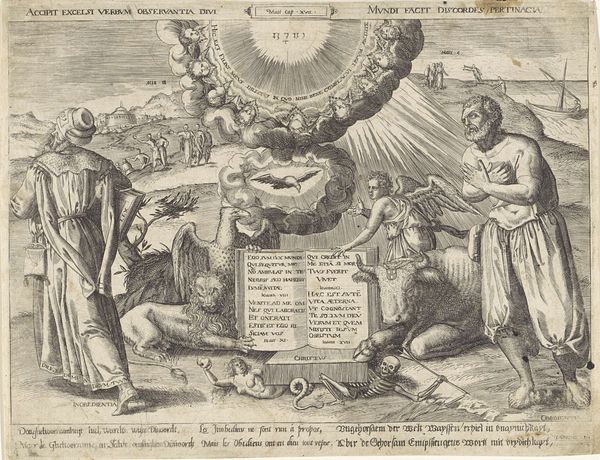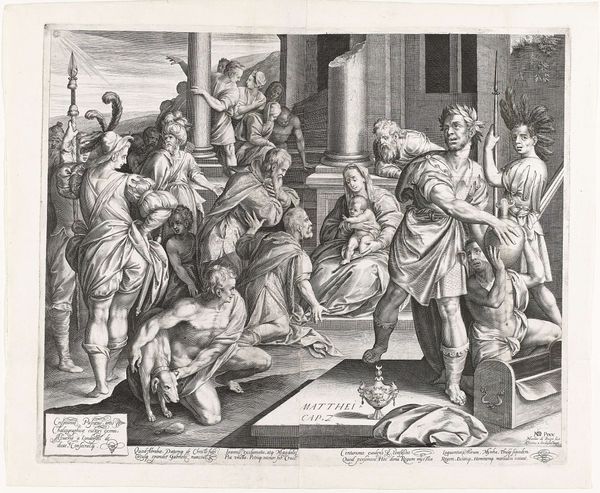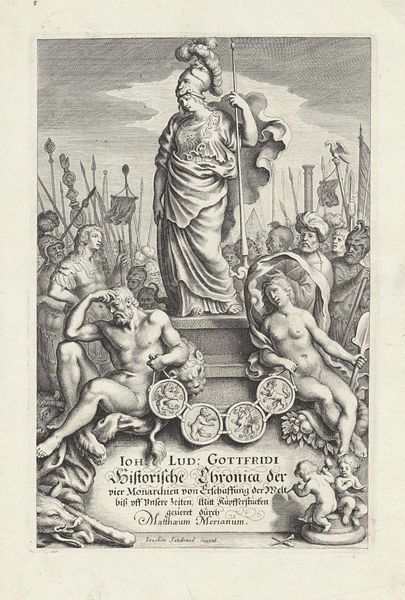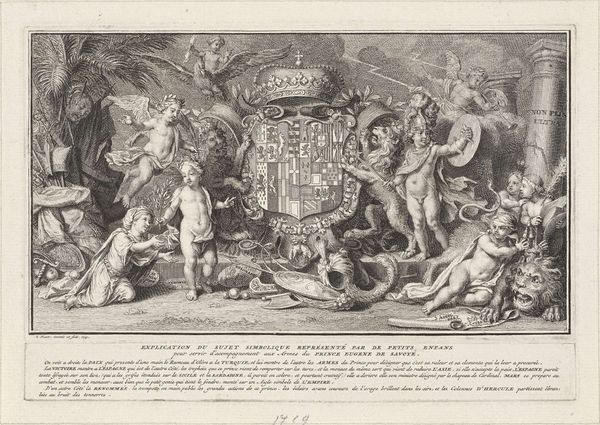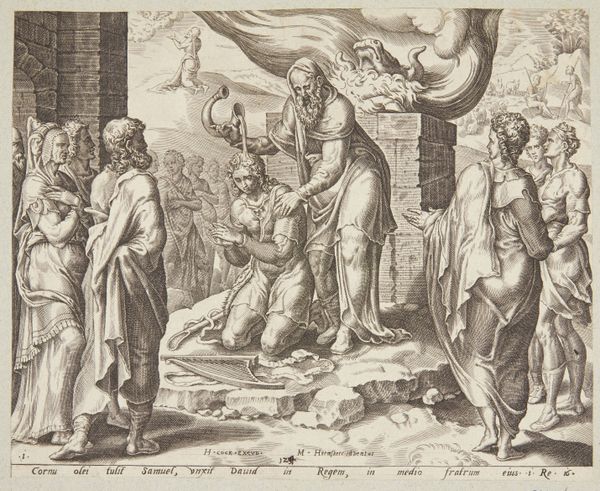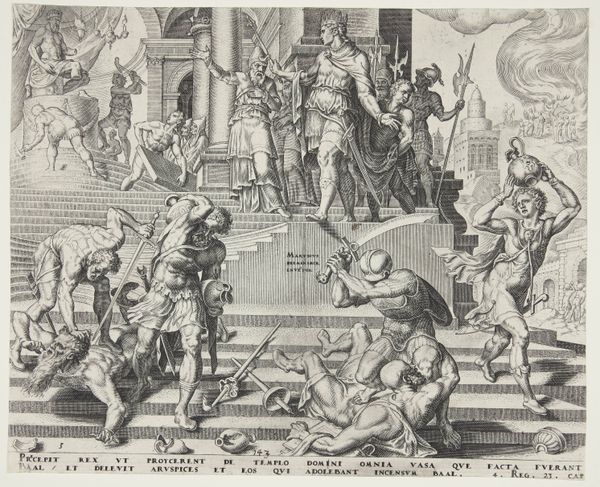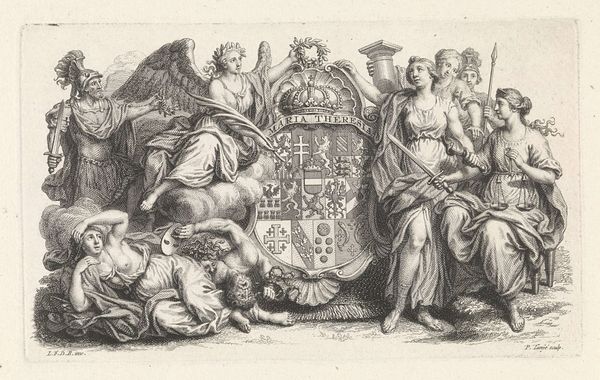
Allegorie op de overwinningen van het Franse leger in Europa 1693 - 1697
0:00
0:00
engraving
#
allegory
#
baroque
#
history-painting
#
engraving
Dimensions: height 204 mm, width 289 mm
Copyright: Rijks Museum: Open Domain
Curator: Adriaen Schoonebeek’s “Allegory on the Victories of the French Army in Europe,” created between 1693 and 1697, stands before us here at the Rijksmuseum. It's an engraving depicting a symbolic representation of French military triumphs. Editor: It’s intense! There's so much happening. The density of figures creates a palpable tension and you see such detail considering the scale and medium. I’m really drawn to how the material-- the engraved lines-- lends a kind of stark, graphic quality to a really ornate scene. Curator: Absolutely. The engraving itself would have been part of a broader market. Schoonebeek’s skill wasn't just in art, but also in responding to the political and cultural climate of the era. This piece speaks directly to the widespread desire for visual documentation and, frankly, propaganda regarding French military successes during Louis XIV's reign. Editor: It's fascinating to consider how the materials – the paper, the ink, the tools used for engraving – were deployed to construct and disseminate this image of power. The detailed allegorical figures become almost like pieces of a grand performance, where even the method of reproduction becomes part of the spectacle. Curator: Precisely. The artist acts almost like a skilled artisan, taking existing concepts and fashioning them into a tangible political object that shaped public perception and understanding. How do you feel that the baroque aesthetics serve that agenda? Editor: The high drama and ornamentation typical of the baroque aesthetic heighten the emotional impact. The figures practically burst from the surface, each muscle and fold rendered with meticulous detail to project a sense of overwhelming force. This isn’t just an image; it’s a carefully engineered spectacle designed to awe and persuade its audience through artful crafting of line and form. Curator: Considering Schoonebeek’s "Allegory," it goes beyond a simple record, and represents instead a highly mediated articulation of power, shaped by artistic craftsmanship, political imperatives, and, in turn, also shaping the understanding of Europe in this period. Editor: Looking at this intricate work, I'm struck by how even seemingly "fine art" pieces are intertwined with production and reception—that history permeates not only subject but process. It shows the power that these images yield even now, so many centuries later.
Comments
No comments
Be the first to comment and join the conversation on the ultimate creative platform.

